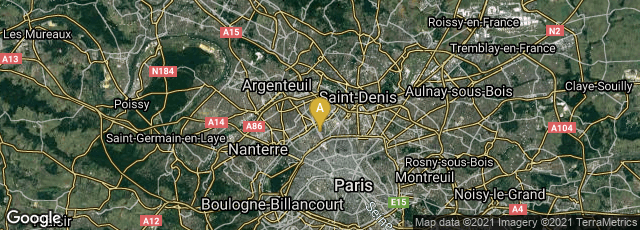The remarkable engraved title page for Dupont's book reflects Dupont's historical interests. On the top is the inventor of printing from movable type, Gutenberg. On the left is a plaque for the famous Elzevir press; on the right for the Didot printing dynasty at which Dupont apprenticed. Beneath the curtain we see Dupont's rather enormous printing facility. Putti at the top of the ornate design work a modern cylinder press on the left and a Stanhope press on the right. In the lower left we see typesetting equipment and on the right finished books and perhaps manuscripts.
Dupont emphasized how his firm employed women as compositors and for type distribution. Here we see the woman's typesetting department, separate from the men's typesetting department.
The male typesetting department at Dupont's printing facility. The labor intensive processes of composition and type distribution required large numbers of skilled workers.
Dupont was still operating Stanhope iron handpresses for short run printing at his facility. He noted in the text that the first Stanhope press was imported into France in 1820.
Dupont operated both single cylinder and double cylinder printing machines at his facility. Here is the artist's rendition of the single cylinder press in operation.
In this image of a double cylinder printing machine in operation at Dupont's plant women are feeding paper. The double cylinder press could print on both sides of the sheet, doubling speed of output.
One of my copies of Dupont's book includes the original printed wrappers. On the rear wrapper Dupont credited the various people responsible:
Designs: MM. Bourdelin et Catenacci.
Type: punches cut by M. Ramé fils; cast at the type foundries of Paul Dupon at the Widow Battemberg et Mayeur
Typographic composition: C. Huart
Paper: from the papermills of MM. Tonnellier et Cie.
Printed on Dupont's double cylinder printing machine by Ch. Michaud
Ink from M. Lefranc et Cie in Paris.
Overall book design by Paul Dupont.


A: Clichy, Île-de-France, France
Perhaps it was a coincidence that Paul Dupont, printer, historian of printing, and politician, published a book describing book production in his factory at Clichy the same year that Alfred Mame et Cie issued a book about their own book production facility. Perhaps the Exposition Universelle of 1867 motivated both printers to issue books promoting their businesses. Whatever the motivation, the two works were very different in character and style. Mame's book in small folio format had an elegant but seemingly cool, rather impersonal quality, while Dupont's book, in octavo format, was very human, and appealing in literary style and illustrations.
In his book, rather modestly titled Une imprimerie en 1867, Dupont discussed and illustrated all the different processes of book and printing production done at his plant including punch cutting, type founding, type composition and distribution, printing, stereotyping and bookbinding. In the type composition and distribution department he emphasized that he employed both women and men, working in separate departments. What he took for granted, and did not discuss, was the convention that women were paid one-third to one-half of the wages of men for equivalent work.
Illustrations in the book showed the female composition department, women working in the bookbinding department, and women feeding paper on the single cylinder rotary press. Dupont also provided one fine example of color printing in his book, and as a frontispiece he provided a mounted india paper proof of a lithograph.
Once I discovered the existence of this book in 2020 I was able to buy a copy in quarter morocco with an elegant inscription by Dupont on the title page. A second copy that I bought included the original printed wrappers with Dupont's business card mounted on the front pastedown. The rear printed wrapper credited the various people at Dupont's plant for their contributions to the book.
I have commented on elements in Dupont's book in the captions to the illusttrations.